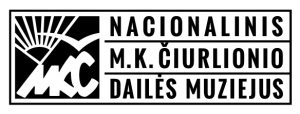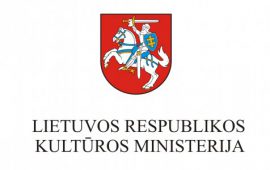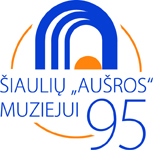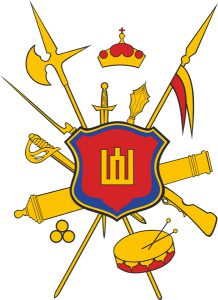Exhibiton "Wooden Miracles"
From 24 May, 2018
To mark the centenary of the restoration of the Lithuanian state, the Lithuanian Art Museum is presenting to the public a representative exhibition of traditional Lithuanian wooden crosses. These wooden folk art monuments make up a significant part of 19th–21st-century Lithuanian folk cultural heritage. In 2001 the art of Lithuanian wooden crosses received international recognition when UNESCO included it into the List of Masterpieces of Oral and Intangible Heritage of Humanity.
The works of Lithuania’s cross-makers and idol-makers dating to the 19th–first half of the 20th centuries – crosses, roof posts, wayside chapel posts, chapels and sculptures of the saints – form a unique part of the folk art world, reflecting the world-view of the rural population and the nation’s artistic creativity. In the first half of the 19th century, the density of crosses erected was so great that only several dozen steps separated one cross from another. The tradition of erecting crosses started to weaken after the uprising of 1863. The largest memorial monument in Lithuania, the Hill of Crosses (in the Šiauliai district), is the final resting place of rebels who died in the fight for freedom in 1863. Crosses are still being erected there to this day, marking the spiritual values of the Lithuanian nation. This exhibition shows a large collection of crosses drawn in 1919–1940 by artist Kazys Šimonis.
High roof posts were commonly erected in Aukštaitija, while Žemaitija (Samogitia) is known more for its wayside chapel posts, chapels built on the ground or mounds of rocks, and small chapels hung in trees. The Dzūkija region stands out for crosses featuring the implements used in the torment of Christ. Monuments built in village cemeteries, on roadsides, in farmsteads and fields had a memorial, protective and votive function. The small sculptures of the saints placed inside were an expression of gratitude to the Lord, the Mother of God and the saints for their protection, love and promise of hope. Story lines reflecting the lives of Christ and the Virgin Mary are most widespread.
The laconic, generalised artistic language and inner-concentration characterises the sculptures of idol-makers from the Aukštaitija region. Folk sculptures were most popular in Žemaitija, where we notice a more varied plastic art in the works. Alongside the naïve forms, there are traces of a realist style in the careful, precision carving we see in the works. The exhibition’s highlight are the grand, monumental cross-making masterpieces by the most famous Central Lithuanian cross crafter and god carver, Vincas Svirskis (1835–1916).
In the post-war years, under Soviet occupation, these folk monuments started being destroyed. The first republic folk art show was held in Vilnius in 1953, followed by a second one in 1959. Petras Kalenda, Anicetas Puškorius and Juozas Laurinkus, masters who had learned the carving craft in the years up to the Second World War, were participants. Religious content was replaced by images from socialist life.
The modern revival of folk sculpture is associated with the voluntary folk artists organisation founded in 1966 – the Folk Art Association, which in 1990 was renamed to the Lithuanian Folk Artists’ Union with the reinstatement of the Republic of Lithuania. The museum has the largest collection of works by the most famous contemporary folk sculptors, containing 760 items. They include pieces by the most famous sculptor from Žemaitija, Stanislovas Riauba, and the original works by artist Lionginas Šepka from the Aukštaitija region. The sculptures of Aleksas Mockus, Leonas Lemežis, Juozas Liaudanskis, Juozas Lukauskas, Jonas Vizbaras, Vytautas Ulevičius and Ipolitas Užkurnis are also very impressive.
In the late 20th–early 21st centuries, folk artists have been continuing to nurture the folk sculpture cross-making traditions of our nation. The museum’s collection had been supplemented with works by the well-known folk sculptors Gintautas Akstinas, Juozas Čepulis, Augustinas Teresius, Rimantas Zinkevičius, Vidmantas Zakarka and Vanda Umbrasienė. The preservation and fostering of cross-making traditions contributes to keeping our national self-awareness alive, maintaining ethnic values and highlighting their importance to Lithuania and its future.
Marija Kuodienė
Partners:
 |
 |
 |
 |
 |
 |
Radvila Palace Museum of Art,
24 Vilniaus st, LT-01402, Vilnius, Lithuania
+370 5 250 5824














